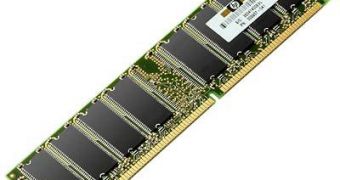DDR memory is ... how many years old? Well, I'm not really sure, but I'm willing to bet that it is at least 6 years old. DDR2 on the other hand is quite a new face in memory town; besides, there are still plenty of computer users who simply will not jump in the newer DDR2 boat because that would mean at the very least a mainboard upgrade, if not more. Let's see: the memory and the mainboards are for sure...the processors a "maybe" leaning towards "yes" and the power source just the same. Now we see how a simple memory upgrade will transform itself into a walking, talking and money eating nightmare.
What I find both amusing and irritating at the same time is the fact that I don't know if to upgrade my old DDR based system to a DDR2 based one or simply to wait a few more months, one year tops and have access to another technology: the DDR3 memory. I mean, sure, DDR2 may be better than my current hardware is, and I may switch platforms, but I would not like to have to buy the better part of a new computer again in a few months only say because I can find no memory modules for an upgrade.
Let's look up at the different standards of DRAM and see what the fuss is all about. First of all, clock speed. Well, DDR uses 100, 133, 166 and 200 (no overclocking around here, boys and girls) and while in terms of real clock speed DDR2 and DDR3 are using the very same frequencies their data samples per core clock are bigger. A DDR memory module will read or write data at the both ends of the signal, thus giving it a data rate of 2. Because DDR2 and DDR3 memories can read 4 and 8 data samples respectively, with every tick of the clock, their effective clock speed is much, much bigger. A trade out of this is that typical latencies increase with the effective clock speed, DDR3 memory having some pretty high values in that sector. DDR3 memory brings some other hidden advantage as well, lower voltage required to function means lower heat and lower power consumption too.
The bottom line is that DDR3, at least in theory, should offer a significant increase in bandwidth and a sacrifice in latency. The latency increase is measured in clock cycles and while they may seem quite big, the actual time differences are small. For example, a DDR2 module with an effective frequency of 800MHz that has a CAS latency of 5 means an actual time latency of about 6.25ns, while a DDR-1333 with CAS latency of 9 has a time latency of 6.75ns. The differences are small, as seen above, but they do tend to build up over time.

 14 DAY TRIAL //
14 DAY TRIAL //